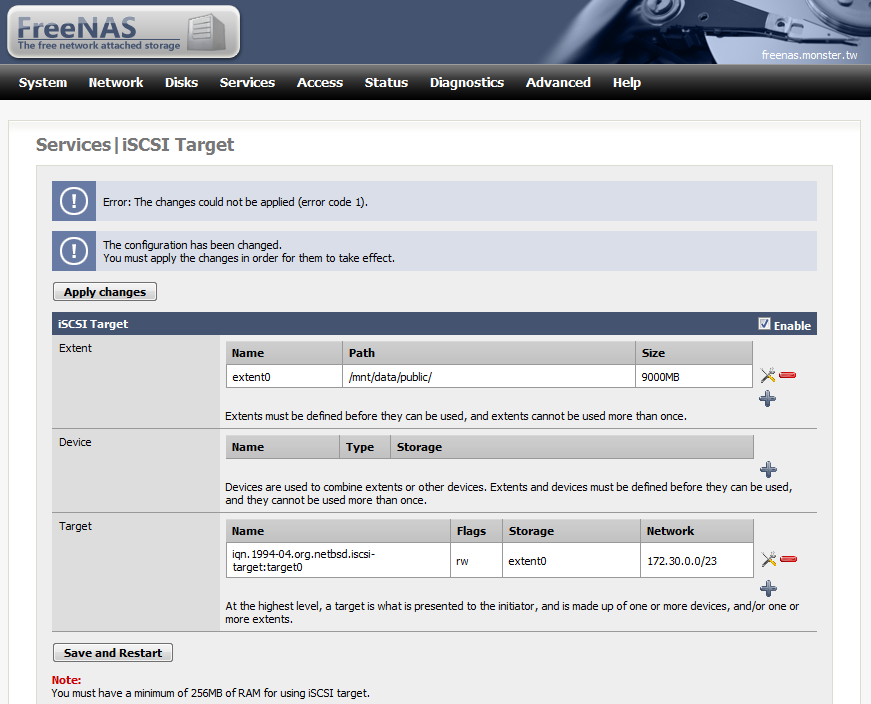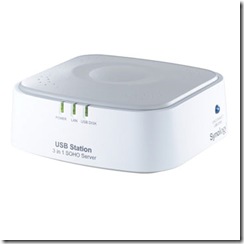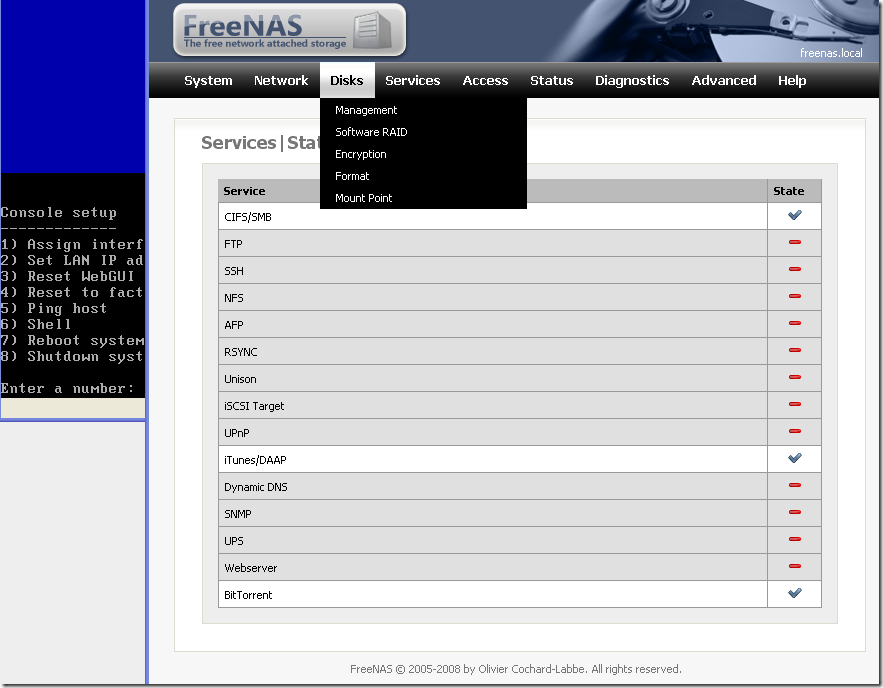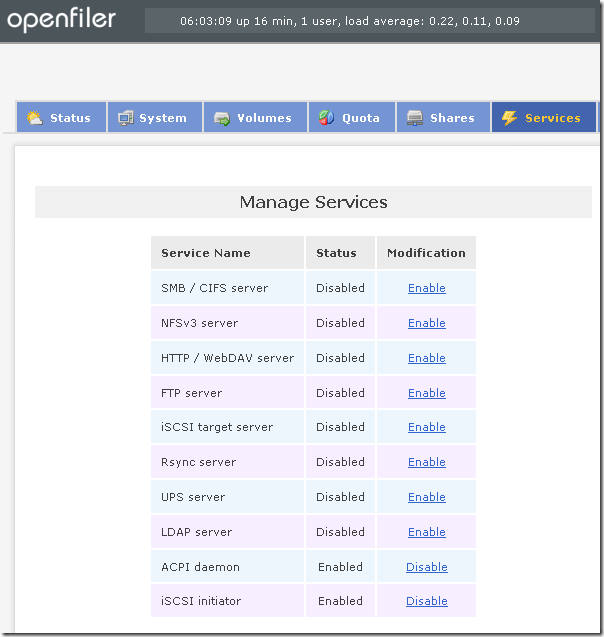首先這是 iSCSI 的基本知識 , From wiki : http://en.wikipedia.org/wiki/ISCSI
iSCSI uses TCP/IP (typically TCP ports 860 and 3260). In essence, iSCSI simply allows two hosts to negotiate and then exchange SCSI commands using IP networks. By doing this, iSCSI takes a popular high-performance local storage bus and emulates it over wide-area networks, creating a storage area network (SAN). Unlike some SAN protocols, iSCSI requires no dedicated cabling; it can be run over existing switching and IP infrastructure. As a result, iSCSI is often seen as a low-cost alternative to Fibre Channel, which requires dedicated infrastructure.
Although iSCSI can communicate with arbitrary types of SCSI devices, system administrators almost always use it to allow server computers (such as database servers) to access disk volumes on storage arrays. iSCSI SANs often have one of two objectives:
Storage consolidation
Organizations move disparate storage resources from servers around their network to central locations, often in data centers; this allows for more efficiency in the allocation of storage. In a SAN environment, a server can be allocated a new disk volume without any change to hardware or cabling.
Disaster recovery
Organizations mirror storage resources from one data center to a remote data center, which can serve as a hot standby in the event of a prolonged outage. In particular, iSCSI SANs allow entire disk arrays to be migrated across a WAN with minimal configuration changes, in effect making storage “routable” in the same manner as network traffic.
以下是基本的名詞解釋
Initiator
Further information: SCSI initiator
An initiator functions as an iSCSI client. An initiator typically serves the same purpose to a computer as a SCSI bus adapter would, except that instead of physically cabling SCSI devices (like hard drives and tape changers), an iSCSI initiator sends SCSI commands over an IP network. An initiator falls into two broad types:
- Software initiator
- A software initiator uses code to implement iSCSI. Typically, this happens in a kernel-resident device driver that uses the existing network card (NIC) and network stack to emulate SCSI devices for a computer by speaking the iSCSI protocol. Software initiators are available for most mainstream operating systems, and this type is the most common mode of deploying iSCSI on computers.
- Hardware initiator
- A hardware initiator uses dedicated hardware, typically in combination with software (firmware) running on that hardware, to implement iSCSI. A hardware initiator mitigates the overhead of iSCSI and TCP processing and Ethernet interrupts, and therefore may improve the performance of servers that use iSCSI.
Host Bus Adapter
An iSCSI host bus adapter (more commonly, HBA) implements a hardware initiator. A typical HBA is packaged as a combination of a Gigabit (or 10 Gigabit) Ethernet NIC, some kind of TCP/IP offload technology (TOE) and a SCSI bus adapter, which is how it appears to the operating system.
An iSCSI HBA can include PCI option ROM to allow booting from an iSCSI target.
Target
iSCSI refers to a storage resource located on an iSCSI server (more generally, one of potentially many instances of iSCSI running on that server) as a “target”. An iSCSI target usually represents hard disk storage. As with initiators, software to provide an iSCSI target is available for most mainstream operating systems.
- Storage array
- In a data center or enterprise environment, an iSCSI target often resides in a large storage array, such as a NetApp filer or an EMC Corporation NS-series computer appliance. A storage array usually provides distinct iSCSI targets for numerous clients.[1]
- Software target
- In a smaller or more specialized setting, mainstream server operating systems (like Linux, Solaris or Windows Server 2008) and some specific-purpose operating systems (like NexentaStor, StarWind iSCSI SAN, FreeNAS, iStorage Server, OpenFiler or FreeSiOS) can provide iSCSI target’s functionality.
Addressing
Special names refer to both iSCSI initiators and targets. iSCSI provides three name-formats:
- iSCSI Qualified Name (IQN)
- Format: iqn.yyyy-mm.{reversed domain name} (e.g. iqn.2001-04.com.acme:storage.tape.sys1.xyz) (Note: there is an optional colon with arbitrary text afterwards. This text is there to help better organize or label resources.)
以下是用 FreeNAS 的 step by step ,
我把一個 hardisk 整個當作一個 iSCSI 的 target (FreeNAS 那邊可以分成用 file 或 device 當 target , 各有好壞 , 當然 device 是效能較好)
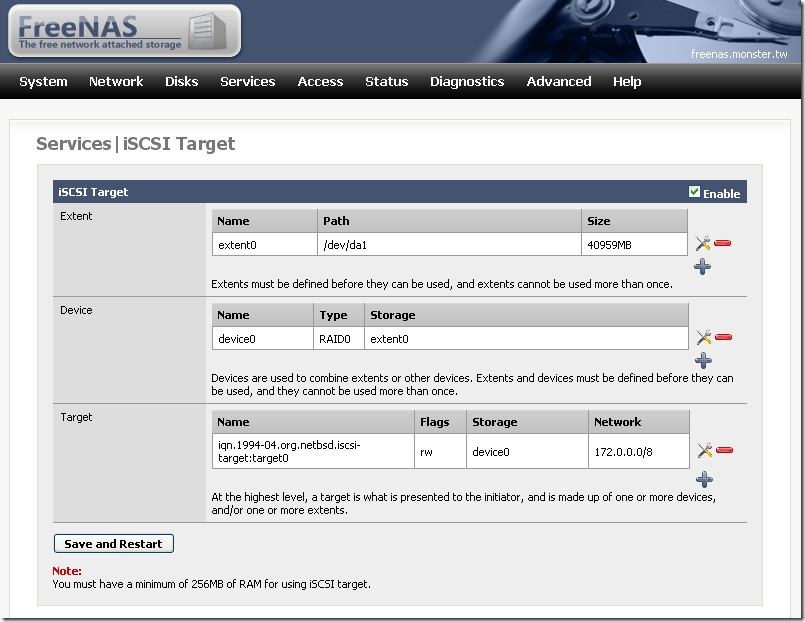
在 VMware ESXi server 那邊要把 iSCSI 的 software adapter enable ( Initiator ):
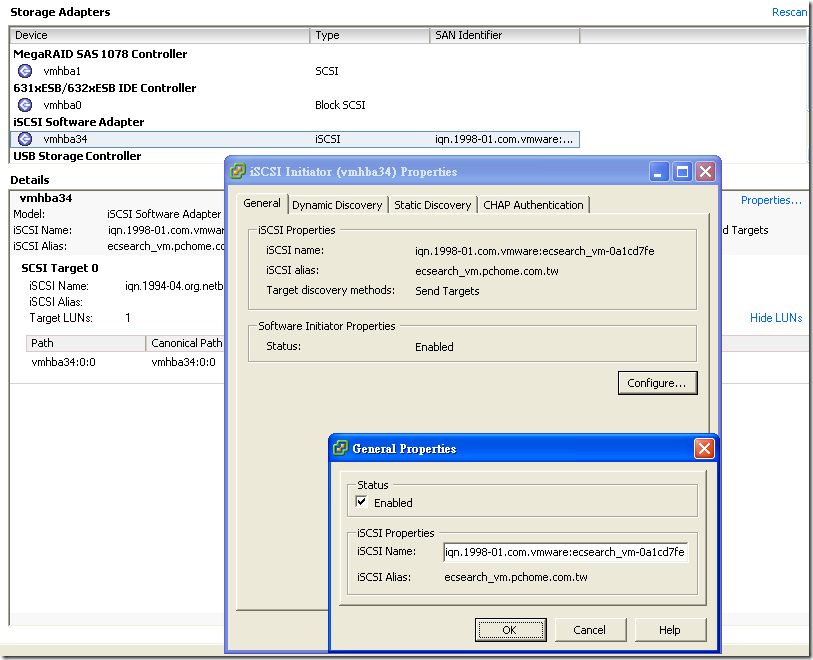
在 Storage 那邊把 FreeNAS 提供的 iSCSI target 加進來 , Windows Vista 可以直接把 taget 加進去, XP 或 其他的 Windows server 要裝 Microsoft 所題供的 iSCSI software 才行.
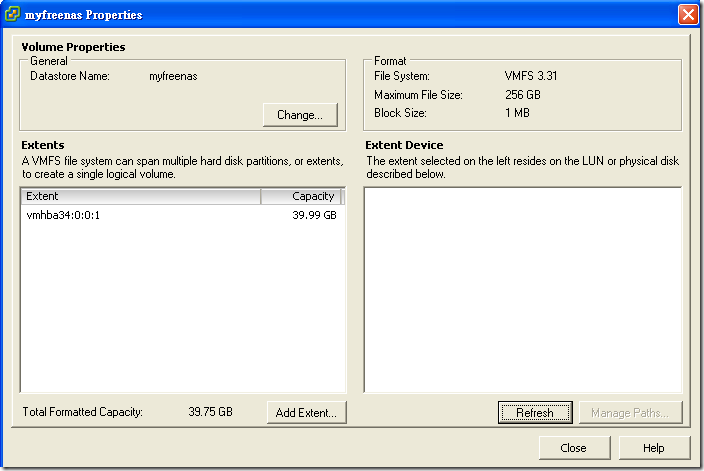
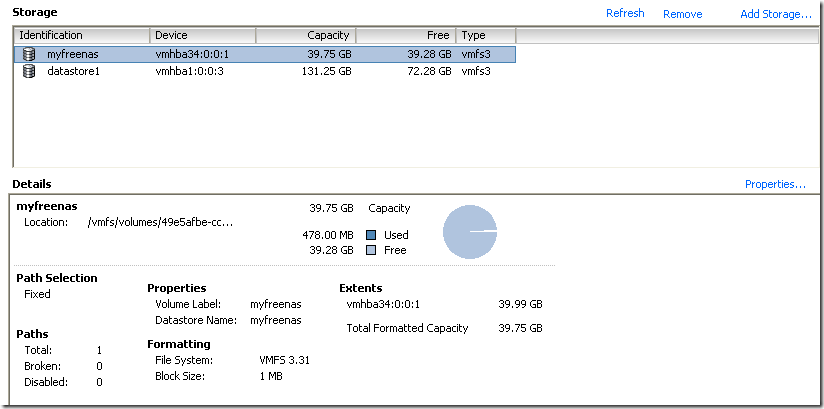
不過我發現 iSCSI 的 extent 用 file 的會有 error : Error: The changes could not be applied (error code1).
